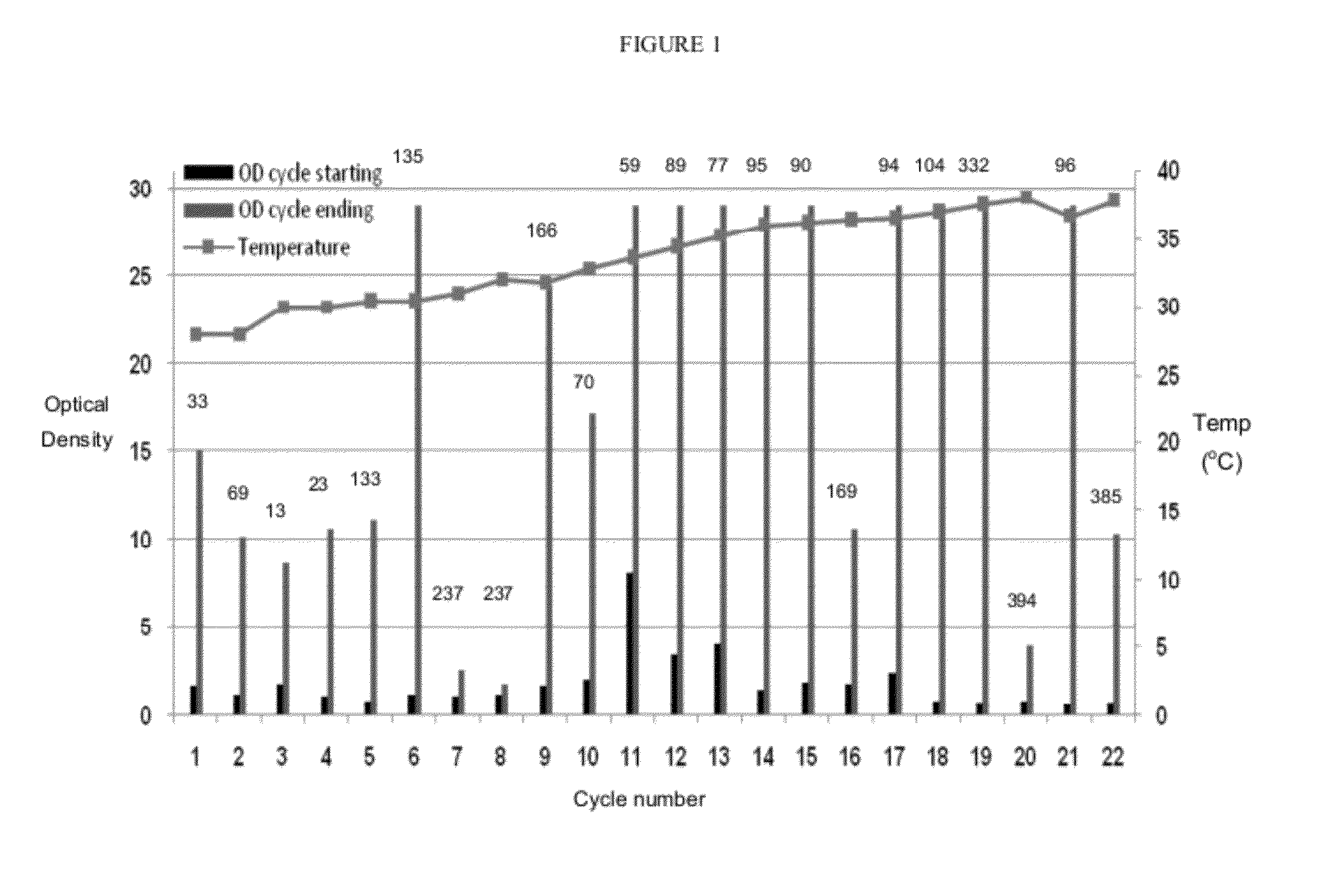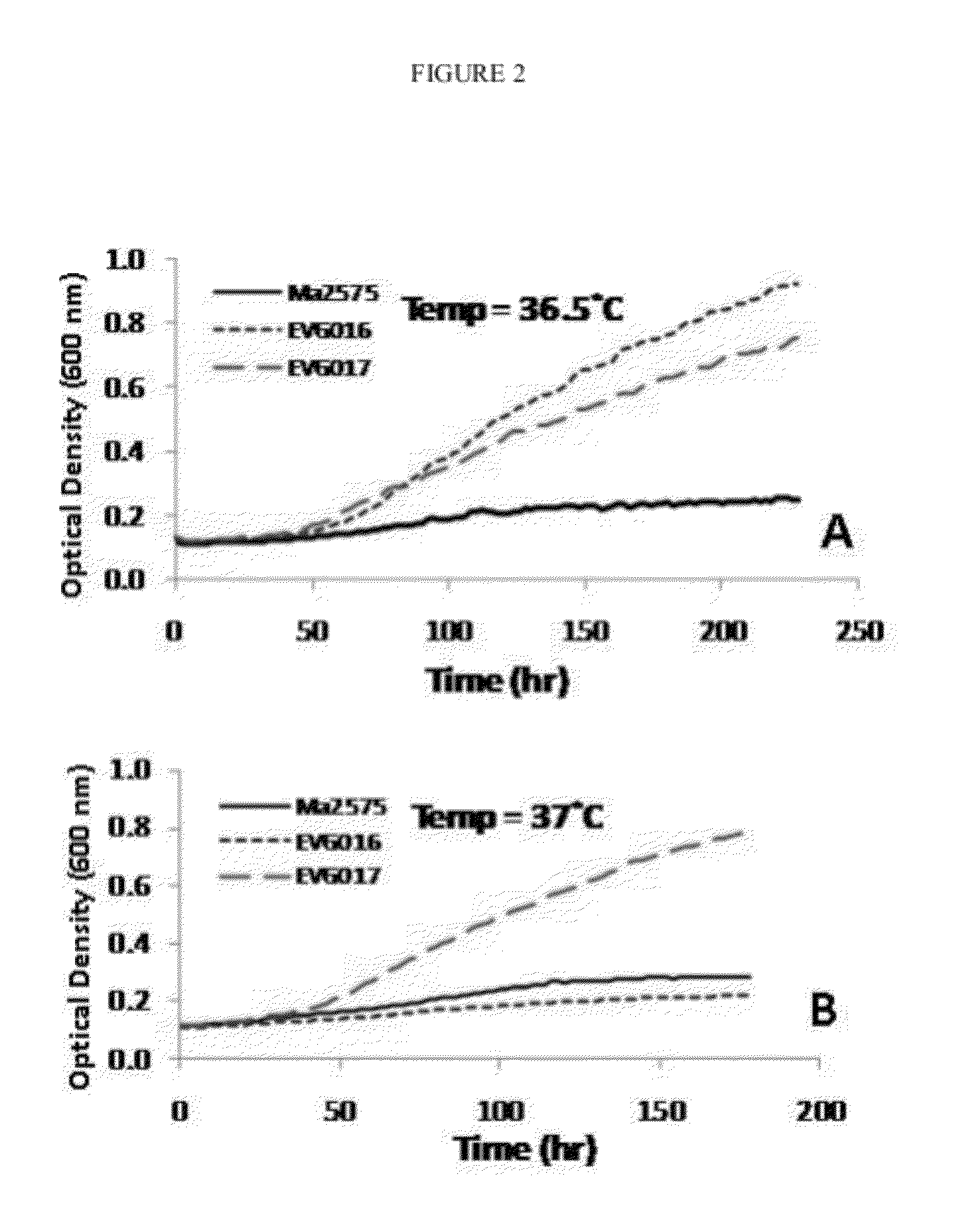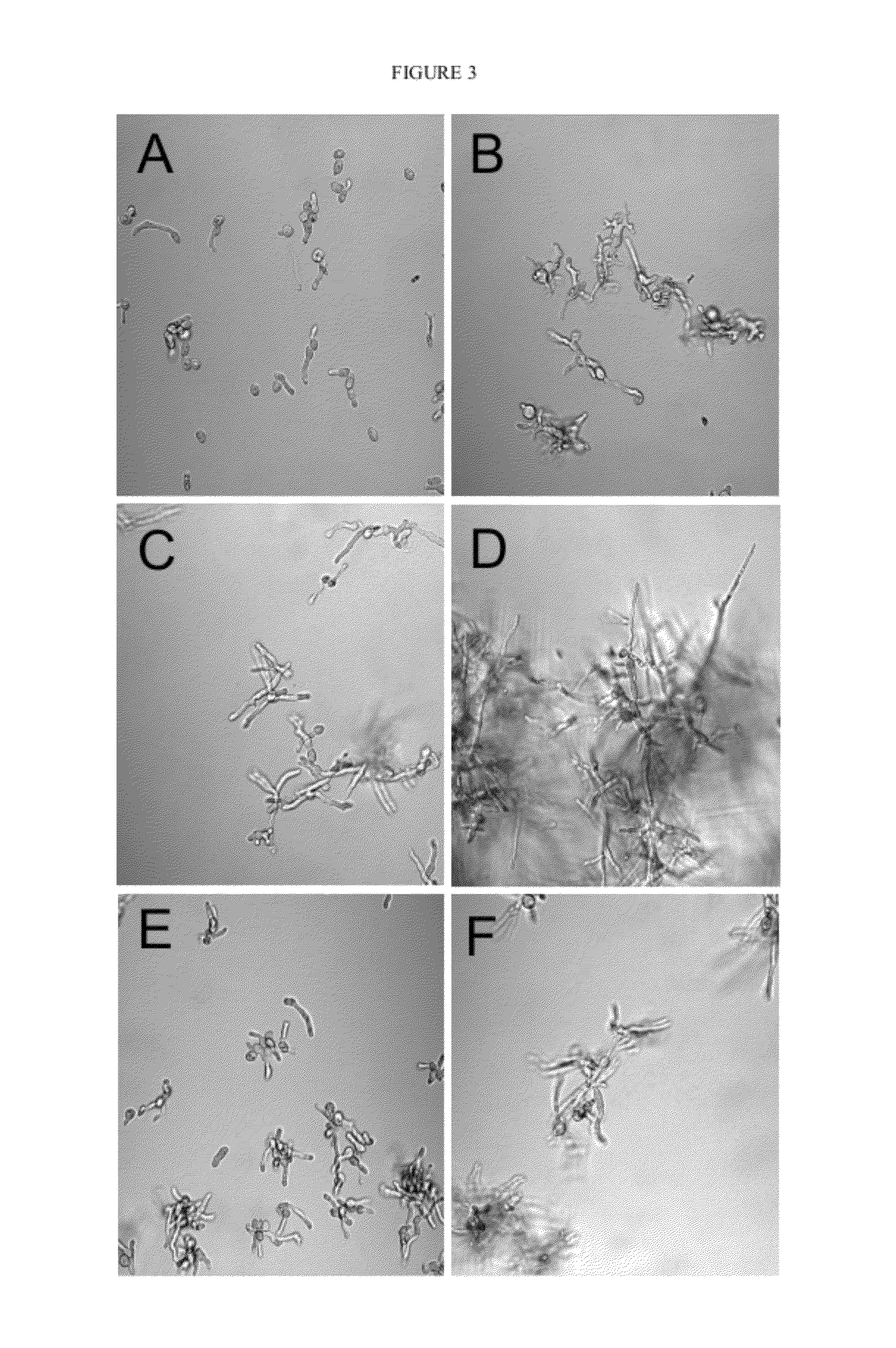Biocontrol microorganisms
a technology of microorganisms and microorganisms, applied in the field of biocontrol microorganisms, to achieve the effects of enhancing tolerance to ultraviolet light, enhancing tolerance to chemical, and enhancing tolerance temperatur
- Summary
- Abstract
- Description
- Claims
- Application Information
AI Technical Summary
Benefits of technology
Problems solved by technology
Method used
Image
Examples
example 1
A Continuous Culture Device
[0163]FIG. 6 displays an overall view of a possible configuration of a continuous culture device. A flexible tubing (1) contains the different regions of the device which are: upstream fresh medium region (7), growth chamber region (10), sampling chamber (11) and disposed grown culture region (15). A thermostatically controlled box (2) allows regulation of temperature according to conditions determined by user. Within the box located are the following: growth chamber (10), sampling chamber (11), upstream gate (3) defining the beginning of said growth chamber, downstream gate (4) defining the end of said growth chamber and the beginning of sampling chamber, second downstream gate (5) defining the end of the sampling chamber, turbidimeter (6) allowing the user or automated control system to monitor optical density of growing culture and to operate a feedback control system (13) as well as allowing controlled movement of the tubing on the basis of culture den...
example 2
Evolutionary Adaptation of Filamentous Fungi
[0164]With the use of Evolugator™ technology, c strain ARSEF2575 (USDA ARS Insect Pathogenic Fungus Collection, Ithaca, N.Y.), whose normal upper thermal limit for growth is 32° C., was adapted to grow at 37° C.
[0165]Continuous Culture Setup
[0166]Briefly, directed selection occurs inside a growth chamber made of 100% silicone tubing (12.7 mm external diameter and 9.5 mm internal diameter, Saint Gobain, France) that is flexible, transparent and gas-permeable. The tubing is filled with growth medium and sterilized prior to mounting into the continuous culturing system described herein, where it is subdivided using “gates”, which are clamps that prevent the flow of medium and cultured organisms from one subdivision to the next. Between the central gates is the “growth chamber”, which has a volume of ˜10.8 mL. Oxygenation of the growth chamber is augmented beyond the permeability of the tubing by maintaining a 1.8 mL (±5%) bubble of filtered a...
example 3
Artificial Evolution of a Bacterium
[0186]Strains and media: The input strain MG1655 was obtained from the Escherichia coli Genetic Stock Center (CGSC, Yale, Conn.). LB and M9 minimal media were made according to standard protocol known in the art (e.g. Sambrook et al., Molecular Cloning: A Laboratory Manual, Cold Spring Harbor Laboratory Press, Third Edition (2001). Carbon sources were all used at a final concentration of 0.4% (w / v). E. coli K-12 MG1655 was inoculated into the growth chamber containing LB and the temperature was slowly increased from 44° C. to 49.7° C. over the course of 8 months of automated dilution cycles.
[0187]Experimental Evolution: Strains were evolved according to methods, devices, and compositions described herein. Over the course of the experiment, four thermotolerant strains (EVG1031, EVG1041, EVG1058 and EVG1064) were sequentially taken from the Evolugator™ at various temperatures and cryogenically stored for further study. Directed selection occurs insid...
PUM
| Property | Measurement | Unit |
|---|---|---|
| temperature | aaaaa | aaaaa |
| temperature | aaaaa | aaaaa |
| wavelength | aaaaa | aaaaa |
Abstract
Description
Claims
Application Information
 Login to View More
Login to View More - R&D
- Intellectual Property
- Life Sciences
- Materials
- Tech Scout
- Unparalleled Data Quality
- Higher Quality Content
- 60% Fewer Hallucinations
Browse by: Latest US Patents, China's latest patents, Technical Efficacy Thesaurus, Application Domain, Technology Topic, Popular Technical Reports.
© 2025 PatSnap. All rights reserved.Legal|Privacy policy|Modern Slavery Act Transparency Statement|Sitemap|About US| Contact US: help@patsnap.com



